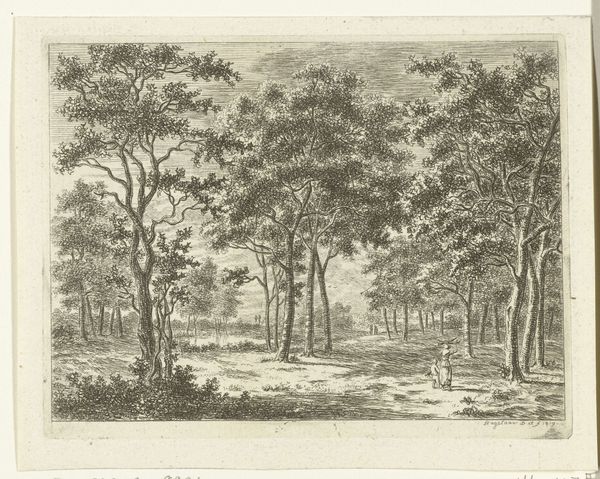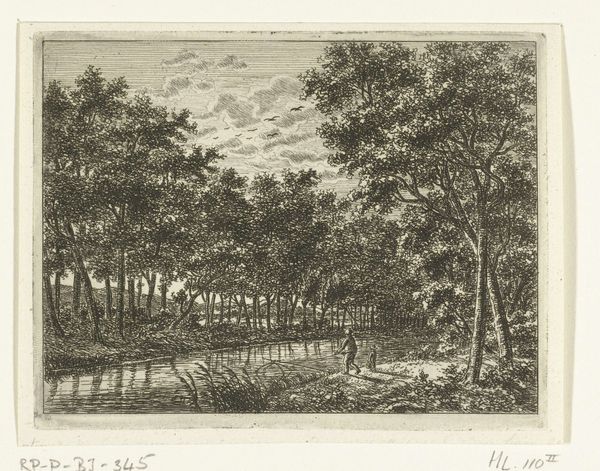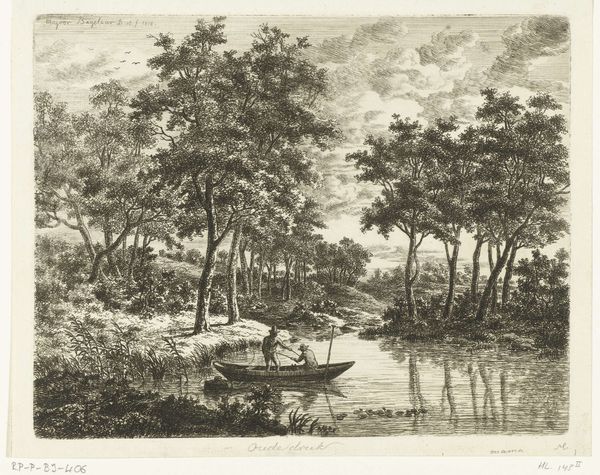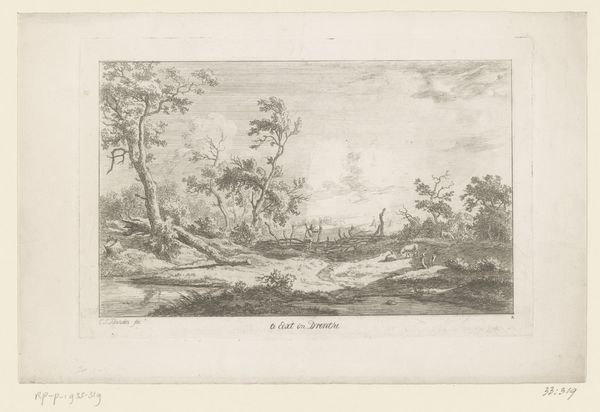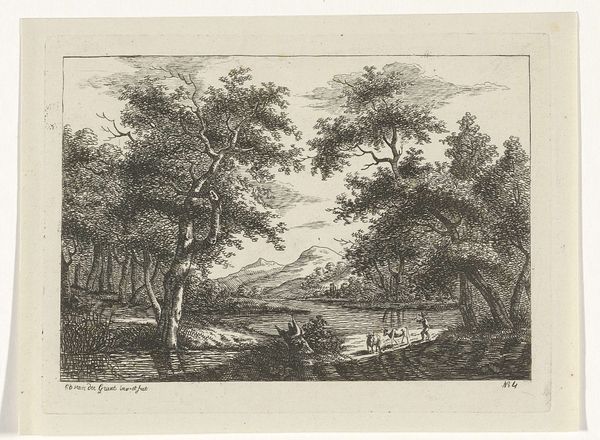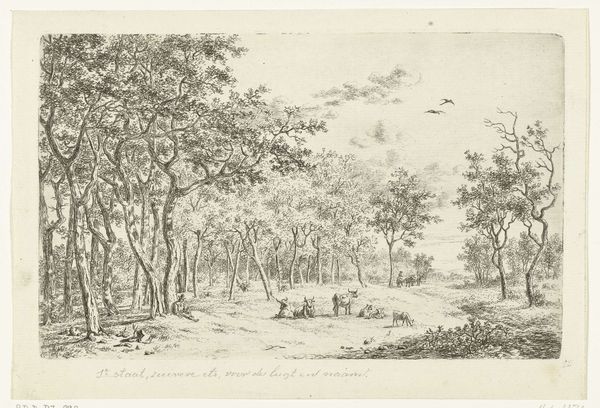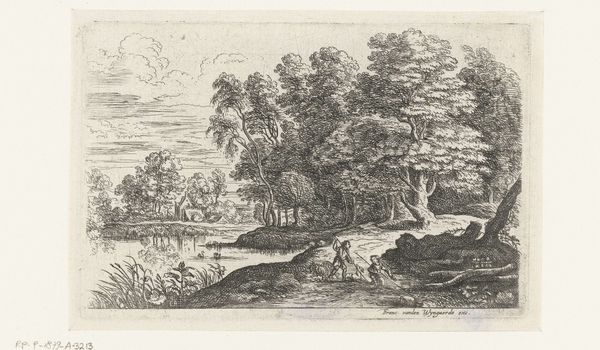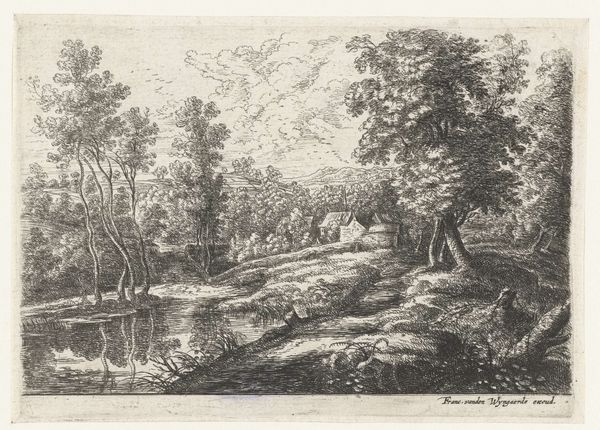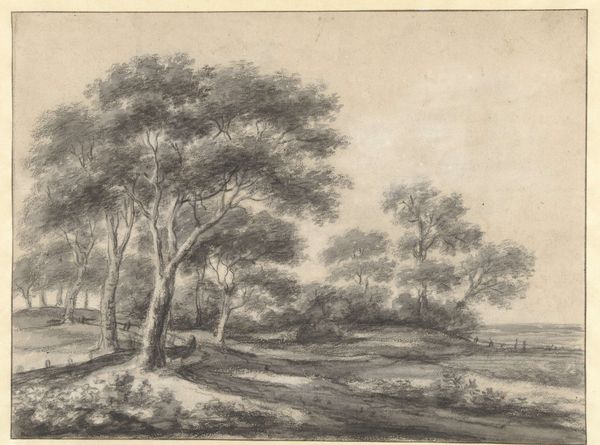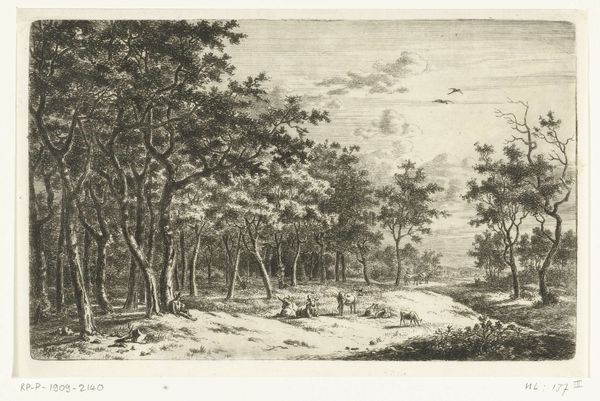
Landschap met drie koeien in een plas, rechts leunt een herder tegen een boom 1798 - 1837
0:00
0:00
print, etching
# print
#
etching
#
landscape
#
figuration
#
romanticism
Dimensions: height 202 mm, width 256 mm
Copyright: Rijks Museum: Open Domain
Curator: This etching by Ernst Willem Jan Bagelaar, made sometime between 1798 and 1837, is titled "Landscape with three cows in a pool, a shepherd leaning against a tree on the right". My immediate reaction is of tranquility and a sense of pastoral simplicity. Editor: Yes, there’s a definite romanticism to it. The idyllic image speaks to a constructed vision of rural life that often conveniently overlooks the lived realities of those who work the land. It begs the question, for whom is this image being produced, and what narrative does it support? Curator: Indeed. It’s fascinating to consider that context. The artist seems to emphasize the harmony between humans and nature, typical for that period of Romanticism. What are your thoughts on the composition itself? Editor: The light and shadow create a beautiful texture across the scene, softening its socio-economic edges. It is skillfully done but in my mind also sanitizes a lot of labour practices. Look how that human figure melts back into nature: they aren’t individual laborers but props within a carefully-framed tableau. Curator: And we see here too that the depiction of animals takes on almost sentimental tones. There is something inherently idyllic about seeing them gently immersed in the waters. Is this perhaps more a comment on the ideal and less on an actual historical context of labour and production? Editor: Possibly, although there is a very deliberate set of ideological choices present that we can examine with some detail using poststructural theory to explore the implicit power structures embedded in the pastoral romantic tradition. And considering that history often shapes the lens of artistic expression, wouldn’t you agree it should invite broader scrutiny in the current context? Curator: Certainly, you make an important point about power and perspective. This detailed etching offers a snapshot into a historical viewpoint on the working classes, idealized as a form of tranquil harmony in nature, obscuring the actual socioeconomic realities of rural communities. Editor: Precisely. Analyzing its position within those contemporary discussions allows for more in-depth explorations of labour practices, wealth distribution, and other critical intersectional perspectives of those eras that we might explore. Curator: It offers such an insightful juxtaposition that blends our understanding of artistic interpretations with tangible history. It certainly allows space for reflection and conversation, providing much food for thought.
Comments
No comments
Be the first to comment and join the conversation on the ultimate creative platform.
